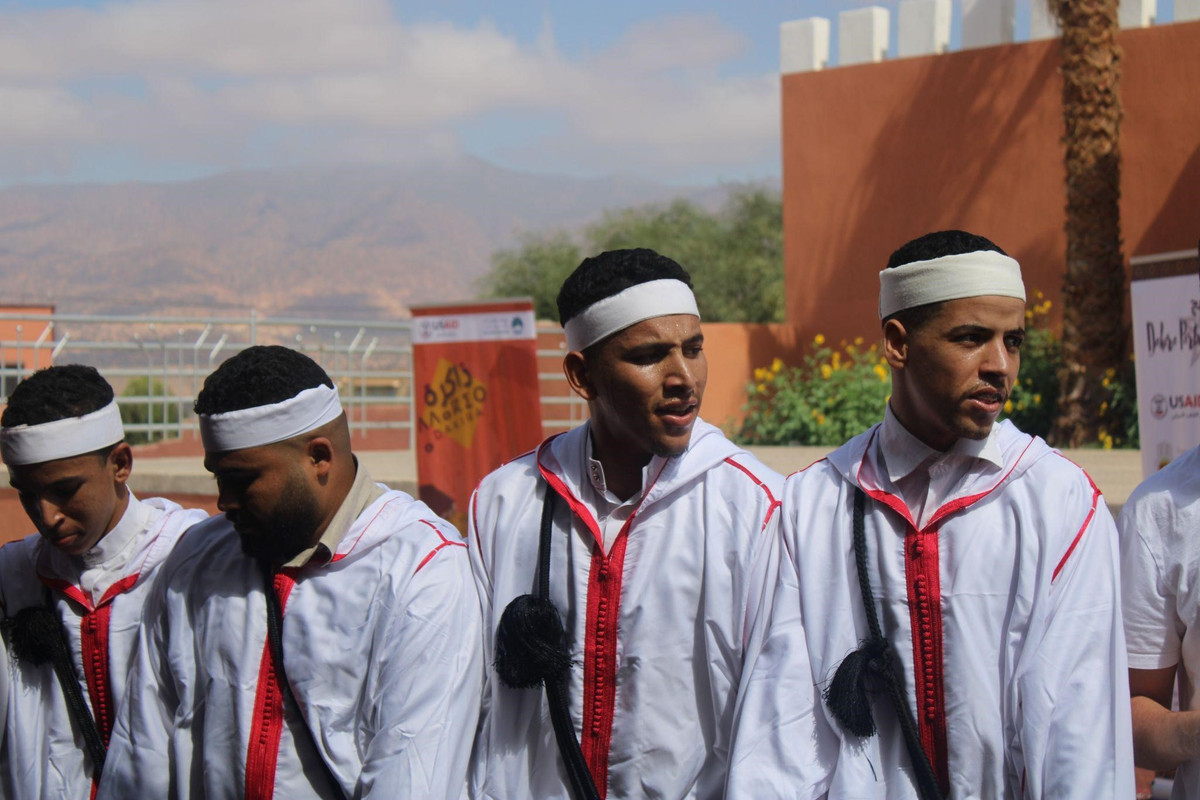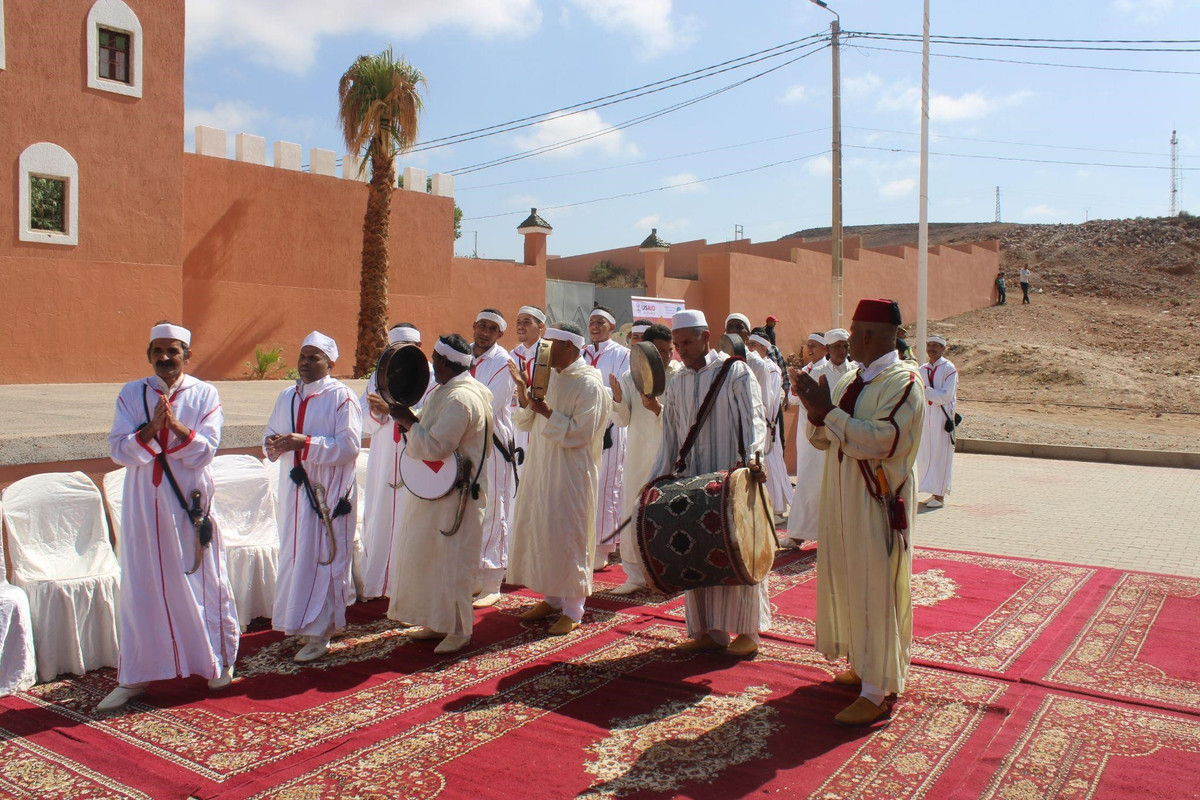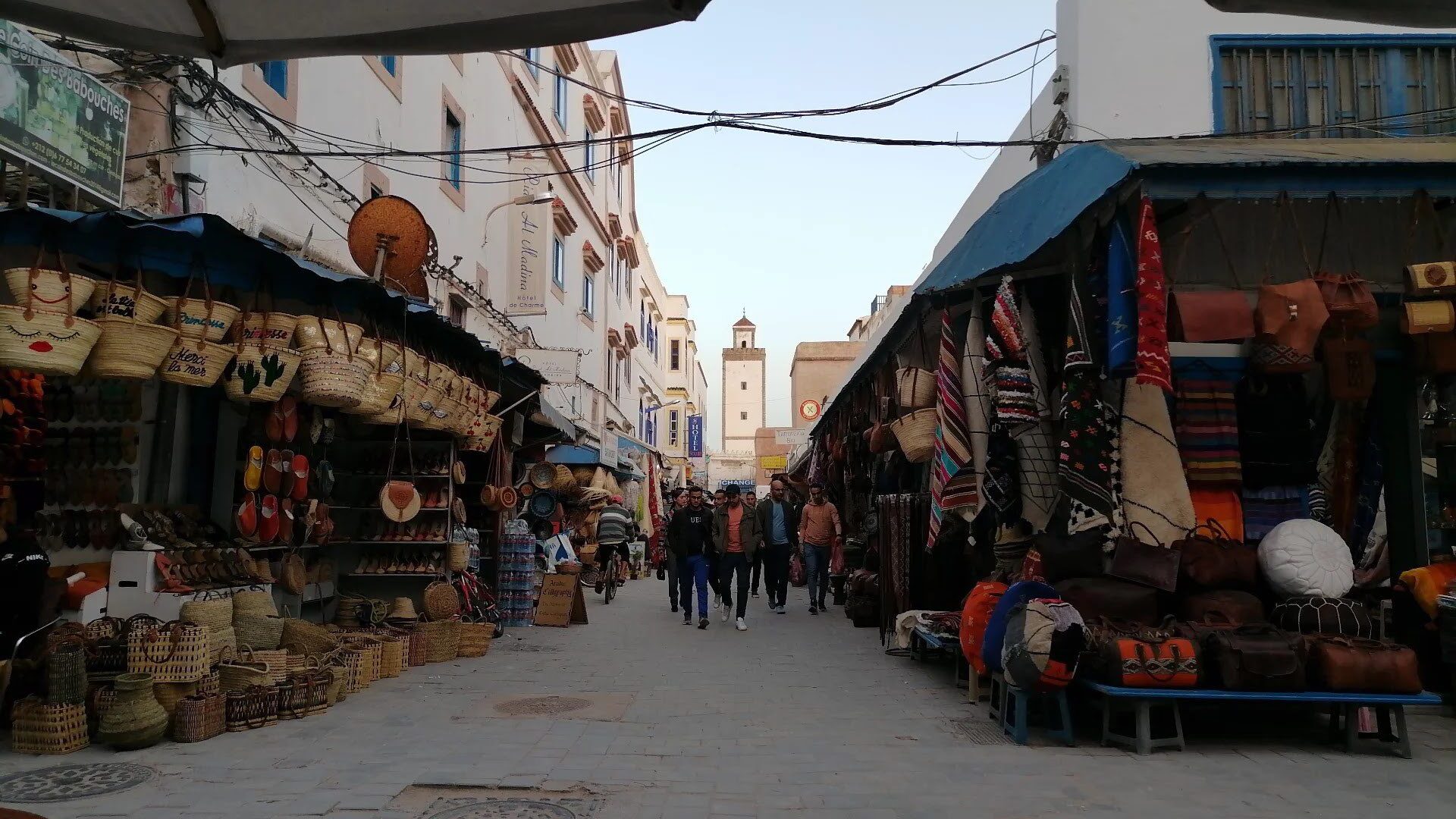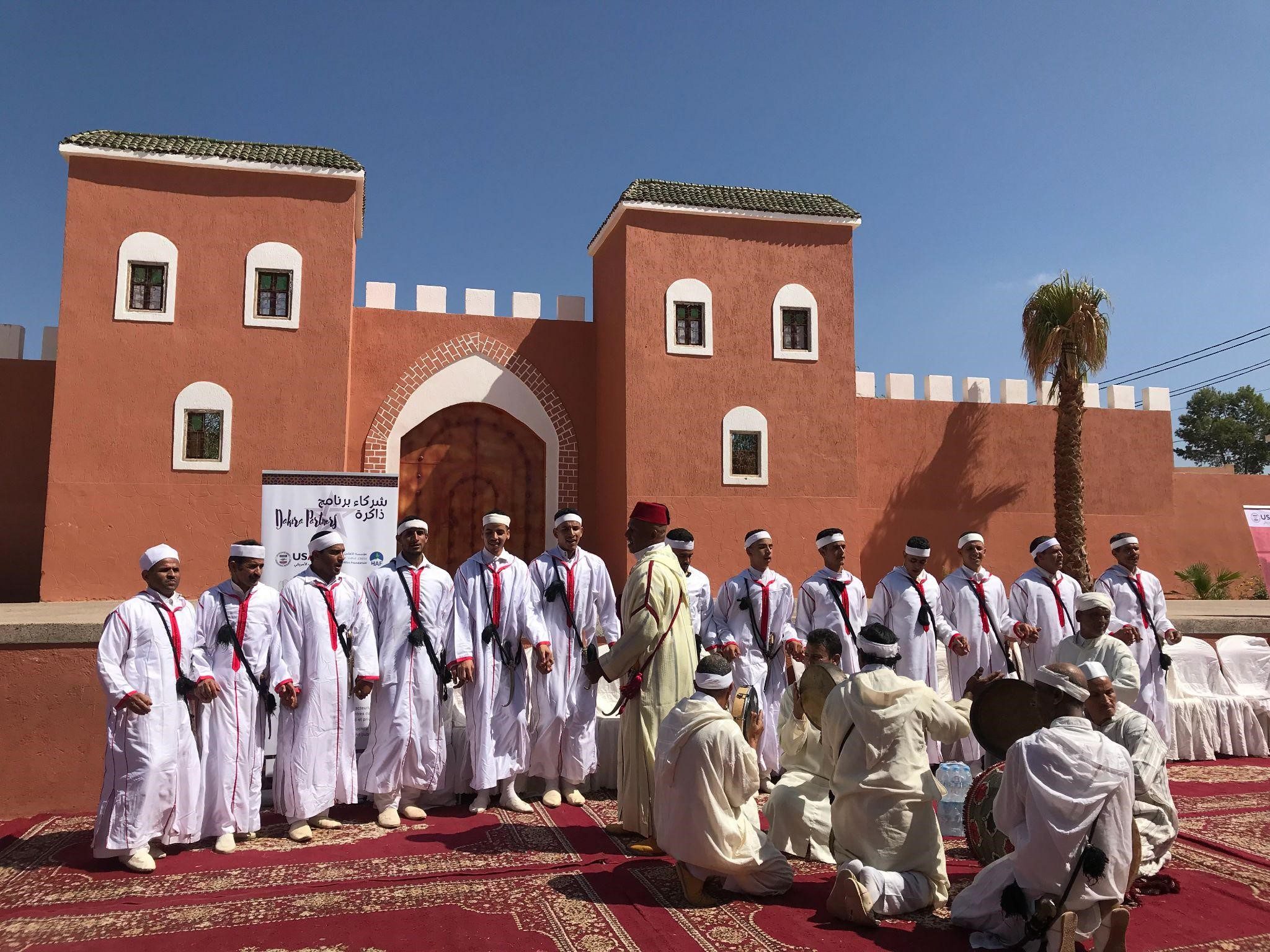Arabic Version
Heritage Month in Morocco
The Ahwach Dance in Aoulouz, Taroudant
By Mohammed Chadli, Dakira Cultural Coordinator
Aoulouz, Taroudant
During the Southern heritage tour that the HAF-Dakira team organized in different locations across southern Morocco, the team was introduced to multiple variations of Ahwach in Telouet, Agouim, Toubkal, and Aoulouz.

Ahwach performance in Aoulouz during the Dakira Southern heritage tour. Taroudant, Morocco. Photo: HAF
As with all the different regions of the kingdom, southern Morocco is rich in cultural diversity and intangible heritage. Amazigh Musical performances, in particular, have served as a form of artistic expression through which personal and tribal experiences are communicated and transmitted. Ahwach is a collective Amazigh traditional dance performance that is common in the High-Atlas and Anti-Atlas Mountains. Although this artistic tradition is peculiar to the High-Atlas and Anti-Atlas regions, the performance may vary slightly depending on the localities and the tribe. Both men and women, together or separately, participate in the performance before an audience. The collective dance is usually performed during joyous ceremonious occasions, such as weddings, circumcisions, the new harvest season, and as a warm welcome to visitors.
A space for unity and social cohesion
Traditionally, Ahwach is performed in Asarag, a large square dedicated to the local community’s social gatherings and celebrations. Combining songs, poetry, body movement, and percussion instruments, both men and women take part in this artistic tradition. Local community members, including men, women, elders, and youths, share different perspectives about Ahwach, but the majority agree that this type of folk music is strongly connected to the local and national identity of Moroccan people. Despite the divergence in terms of poetry and performance, Ahwach was and will always be cherished as a moment of celebrating unity and togetherness. It also reflects the collective way of life of the communities of southern Morocco that have hosted, for centuries, people from different cultural and religious backgrounds. It is part of the intangible cultural heritage of not only Amazigh communities, but also Morocco as a whole.
Ahwach, a mode of expression
In addition to music and dance, poems, delivered with utmost eloquence, are an essential component of the Ahwach performance that cover a wide range of social, cultural and religious topics. Given the conservative nature of the tribes, sometimes performers resort to the use of analogies to communicate their thoughts and feelings, especially when expressing love and admiration. Thus, Ahwach, besides its ceremonial function, also serves as a channel of communication through which the participants voice their hidden feelings.
Ahwach costumes and dresses

Ahwach performers dressed in white Djellabas, carrying leather bags and daggers. Aoulouz, Morocco. Photo: HAF
With regards to clothing, Ahwach costumes are highly symbolic. Both men and women are dressed in white, a symbol of serenity and purity. Women wear caftans topped with Tattereft (a large piece of a white cloth) and cover their heads with Leqtip (a red scarf). Silver adornments such as Khit Rouh (a type of headband), Tikhlalin (a brooch) and Louban embellish the outfit, giving the performers a lavish appearance. As for men, their garments are rather simple as they dress in white Djellabas and turbans, in addition to daggers and leather bags.
Music instruments

Demdoum, an essential music instrument of the Ahwach performance. Aoulouz, Morocco Photo: HAF
A wide variety of hand-made percussion instruments are used in the Ahwach performance. Taguenza is a certain type of tambourine fitted with multiple strings and a membrane made of sheep skin. Naqouss is a metal instrument that produces a bell-like sound. Demdoum is a drum covered on both sides with goat or cow skin. Synchronized hand claps complement the sound combination produced by these instruments, setting the rhythm of an exquisite performance.
The Dakira heritage tour was an opportunity to shed light on the ethnic cultural heritage components in southern Morocco and ways to preserve and transmit it from one generation to another, through bringing to the fore the region’s cultural richness and diversity.
This article is part of the Heritage Month in Morocco campaign (April18 – May 18) that celebrates the Kingdom’s rich heritage, as part of the USAID Dakira Program, which is implemented by the High Atlas Foundation and its partners. The program aims to strengthen inter-religious and inter-ethnic solidarity through community efforts that preserve cultural heritage in Morocco.
The article was completed with the support of the United States Agency for International Development (USAID), and the High Atlas Foundation is solely responsible for its content, which does not necessarily reflect the views of USAID or the Government of the United States.







